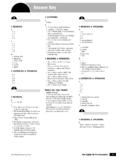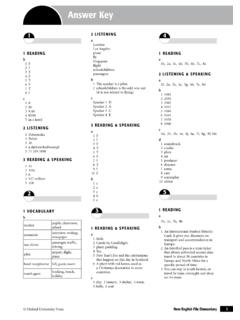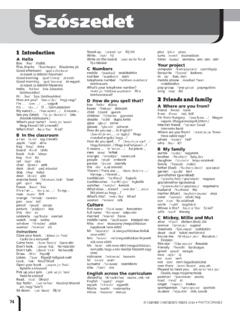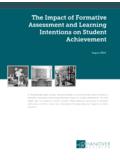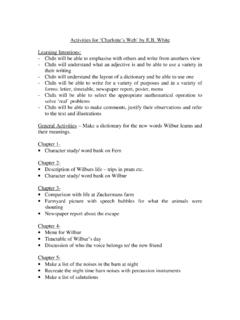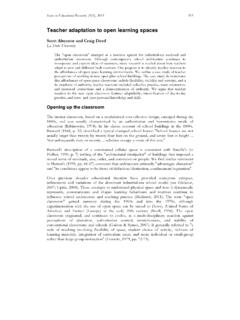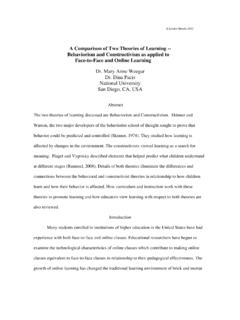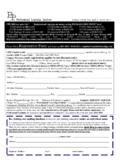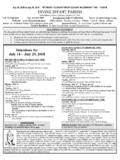Transcription of Teaching and Learning in the Language Classroom - oup.hu
1 OmTeaching and Learning in the and Learning in the Language ng in the Language Classroom nguage ClassroomTeaching and om Teaching and Learning in the and Learning in the Language ng in the Language Classroom nguage Classroom Teaching and omTeaching and Learning in the and Learning in the Language ng in the Language Classroom nguage ClassroomTeaching and om Teaching and Learning in the and Learning in the Language ng in the Language Classroom nguage Classroom Teaching and omTeaching and Learning in the and Learning in the Language ng in the Language Classroom nguage ClassroomTeaching and om Teaching and Learning in the and Learning in the Language ng in the Language Classroom nguage Classroom Teaching and omTeaching and Learning in the and Learning in the Language ng in the Language Classroom nguage ClassroomTeaching and om Teaching and Learning in the and Learning in the Language ng in the Language Classroom nguage Classroom Teaching and omTeaching and Learning in the and Learning in the Language ng in the Language Classroom nguage ClassroomTeaching and om Teaching and Learning in the and Learning in the Language ng in the Language Classroom nguage Classroom Teaching and omTeaching and Learning in the and Learning in the Language ng in the Language Classroom nguage ClassroomTeaching and om Teaching and Learning in the and Learning in the Language ng in the Language Classroom nguage
2 Classroom Teaching and omTeaching and Learning in the and Learning in the Language ng in the Language Classroom nguage ClassroomTeaching and om Teaching and Learning in the and Learning in the Language ng in the Language Classroom nguage Classroom Teaching and omTeaching and Learning in the and Learning in the Language ng in the Language Classroom nguage ClassroomTeaching and om Teaching and Learning in the and Learning in the Language ng in the Language Classroom nguage Classroom Teaching and omTeaching and Learning in the and Learning in the Language ng in the Language Classroom nguage ClassroomTeaching and om Teaching and Learning in the and Learning in the Language g in the Language ClassroomTeaching and Learning in the Language ClassroomExtractsTricia What are the components of communicative Language ability?
3 CompetenceLinguistic competence is concerned with knowledge of the Language itself, its form and meaning. Stern(1983) includes these two aspects in his characterization of what it means to know a Language :The Language user knows the rules governing his native Language and he can apply them withoutpaying attention to them. (Stern 1983: 342)The native speaker has an intuitive grasp of the linguistic, cognitive, affective and socioculturalmeanings expressed by Language forms, (ibid.: 343)Thus linguistic competence involves a knowledge of spelling, pronunciation, vocabulary, word formation,grammatical structure, sentence structure, and linguistic semantics. We can judge, then, that a learner whois able to list orally and in writing the objects in a bowl, such as an apple, an orange, two bananas, and abunch of grapes, is developing the ability to select specific vocabulary and knows its pronunciation andgraphic forms.
4 A learner who can add prefixes correctly to perfect , legal , happy , pleasing , and au-dible to make the negative equivalents, is developing competence in using word-formation rules learner who can describe recent events by using have/has and the past participle of the main verb is de-veloping grammatical competence in forming the present perfect tense. In these various ways the learneris acquiring linguistic competence in the second important point for the teacher to note is that linguistic competence is an integral part of communicativecompetence. As Faerch, Haastrup, and Phillipson point out: It is impossible to conceive of a person beingcommunicatively competent without being linguistically competent (1984: 168). It has perhaps been amisconception about communicative Language Teaching that it does not aim for a high standard of formalcorrectness. On the contrary, it is not incompatible to have correctness in the use of rules as an ultimategoal and, at the same time, to tolerate risk-taking and error in the Classroom as part of the process of achiev-ing communicative role of grammar or formal accuracy has been a major concern in ELT in recent years and teachersneed to address a number of issues in designing courses and Classroom activities for learners.
5 Acquisitionof grammar will probably involve explicit knowledge of grammatical concepts, categories, and rules, andteachers will need to decide which description of these to choose from those available. There is also thequestion of which procedures for raising awareness of Language form and for practising it are most effective:this will be addressed in Chapter the most difficult question to resolve has been how to achieve a balance between focused or form-focused Classroom activities which aim at linguistic accuracy and unfocused activities which in-volve learners in negotiation of meaning and aim at fluency. What might the most appropriate balance ofthese be in one lesson and to what extent will this be determined by the age, stage of Learning , and existingproficiency level of learners? How can these two types of activity be integrated in a lesson or unit of ma-terials?
6 What should the organizing principle be? And how can focused and unfocused activities be balancedand integrated to form a coherent Language Learning programme over a period of time? These are key issuesin ELT and they will be addressed throughout this Pragmatic competencePragmatic competence is generally considered to involve two kinds of ability. In part it means knowinghow to use Language in order to achieve certain communicative goals or intentions. This has also beencalled illocutionary competence. An example would be It s so hot today This statement could have anumber of illocutionary forces. It might be a statement about the physical atmosphere, a request to openthe window, or an attempt to elicit the offer of a cold now tries to ensure that learners are given realistic presentations of Language in use and itscommunicative intentions, for example, the present progressive might be presented through a dialogue,such as:JackHello, Anne, it s Jack here.
7 Can I speak to Robert, please? AnneHi, Jack. Robert s working in the garage at the moment. Can I get him to call you back? Jack Sure. is a typical situation in which reference is made to someone s actions at the time of speaking, onepossible use of the present progressive. The presentation embeds the form in a context of use. This is incontrast to the technique many teachers were taught, myself among them, in the days of the structural ap-proach to ELT, that of giving a running commentary while performing actions in the Classroom , for exam-ple, I m opening the window ; I m closing the door ; I m writing on the blackboard , and so on. Certainlythe latter provided the form and its meaning, but the context of use was less than present progressive, of course, has a number of functions, as the following examples demonstrate:He s coming up the steps. I m leaving in five minutes.
8 Sally is always first, if said to one burglar by another on lookout at the window of a house, observing the progress ofa policeman towards the scene of their crime, could function as a warning. The second, if said by a parentto dawdling children, could be a reprimand. The third might function as criticism. Students will appreciate,through comparison with their first Language , that these pragmatic conditions of use are likely to apply inany Language . However, in recent years, the functional approach has attempted to show the varying func-tional use of Language forms by using functions rather than structures as their organizing principle. Somecoursebooks arrange content in units entitled, for example, Talking about recent events , Inviting , or Speculating about the future . In this way, a particular structure such as the present progressive can be re-visited in units entitled Talking about present actions (for example, She s washing her hair ); Talkingabout the immediate future (for example, They re moving house tomorrow ), or Describing current sit-uations (for example, The Prime Minister is trying to defuse the situation ).
9 Thus, one element of pragmatic competence is knowing how to perform a particular function or expressan intention clearly. In order for communication to be successful, however, spoken or written messagesmust also be appropriate to the social context in which they are produced. Learners need to know the ap-propriate social it is the case that one Language form can express a variety of functions, the converse is also true. A func-tion can often be expressed in a variety of ways. Take these two responses to a telephone request:If you d kindly wait a moment, I ll see if he s able to talk to you. Hang on a minute, love, and I ll get first is highly formal and polite and might be said, for example, by a young clerk in a chamber of bar-risters to an elderly peer of the realm. On the other hand, the second is familiar, and might be said infor-mally by one member of the family to another.
10 The message is identical in both cases but the choice ofvocabulary and structure depends on the setting, the relative status of the speakers, and their role-relation-ship. Some contemporary ELT coursebooks attempt to demonstrate this variation in style. For example, inthe case of the set of requests presented in Materials extract , learners are encouraged to think aboutthe conditions under which each phrase might occur. Through such activities learners build awareness ofthe relationship between Language and the context of its can be seen, then, that social knowledge is necessary to select the Language forms to use in different set-tings, and with people in different roles and with different status. This has also been called sociolinguisticcompetence (Bachman 1990). It can relate as much to non-verbal as to verbal communication. For example,a person accustomed in their own society to summon a waiter by clicking their fingers would meet withlittle success in many English-speaking cultures and would probably cause offence.
